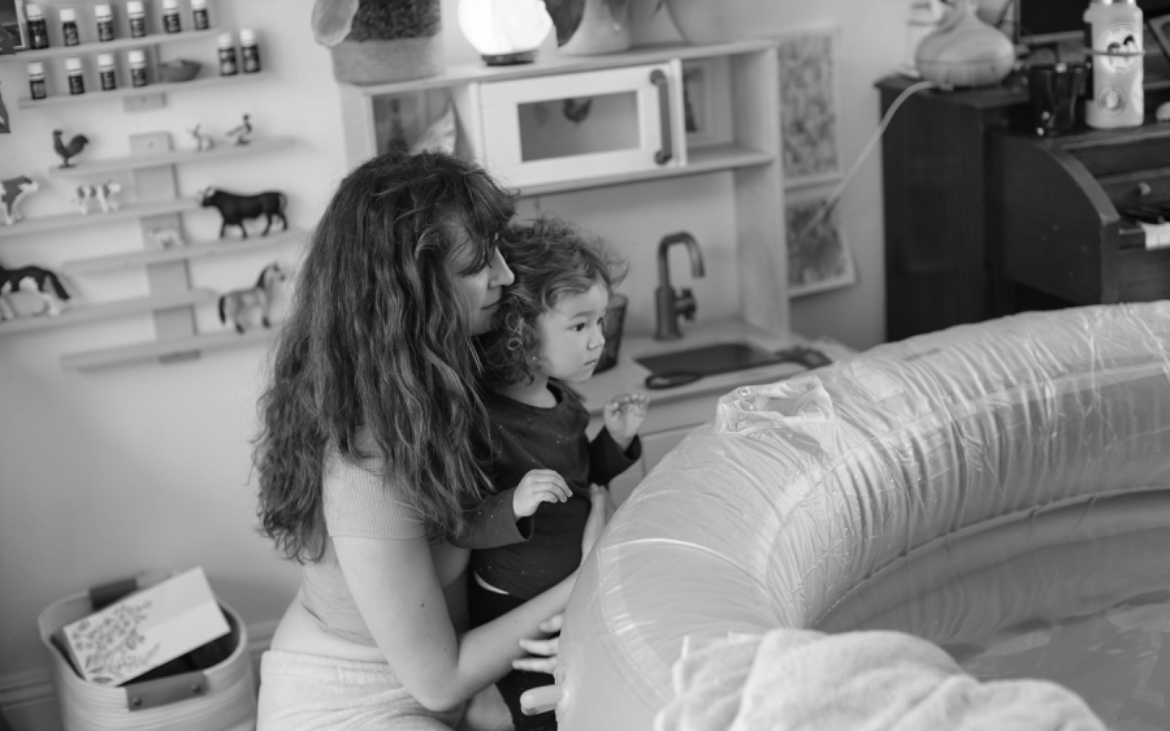
Introducing a new sibling through a homebirth can be a beautiful and intimate experience for the entire family. However, it’s essential to prepare your older children adequately, helping them understand and feel comfortable with what will happen. This guide will provide you with practical tips to ensure your children are ready for the arrival of their new sibling in a home birth setting.
Age-Appropriate Discussions

1. Start the Conversation Early
Suggested Books:
2. Educate with Videos
Visual aids can be particularly effective in helping children understand what to expect. When we try to explain certain things to kids, they may sometimes let their imagination run wild and paint a different picture than what you’re aiming for. There are videos online that are appropriate fro different age groups that I would highly recommend viewing with your kids. Normalizing different birth settings, different vocalizations etc. Watch these videos with your children, pausing to explain and answer questions. This will help them feel more involved and less anxious about the upcoming birth.
Here are some videos that can help you get started:
(all these videos were found on Youtube. Please view them before you show your child/children and assess if they are appropriate for you and your family).
- Water Birth Surrounded by Family | Jacksonville, FL Birth Photographer - YouTube
- Mommy catches her own baby! (youtube.com)
- My Natural Birth Story | Positive Homebirth Vlog (youtube.com)
- Natural Homebirth with Midwife | Delivered by Big Sister! | Positive Birth Experience | Waterbirth (youtube.com)
- Born With Eyes Wide Open | Jacksonville Home Birth Photographer (youtube.com)
3. Involve Them in the Process
Role-Playing
Engage in role-playing games where your children can act out the roles of midwives, doulas, or even the baby. This makes the concept of home birth less abstract and more familiar.
Preparing the Birth Space
Involve your children in setting up the birth space. Let them help with small tasks like arranging pillows, preparing a baby blanket, or choosing some comforting items for the room. This involvement can help them feel more connected to the event.
Creating a Birth Plan
Discuss the birth plan with your children, highlighting their role and what they can do during the birth. Whether it's staying in another room or being present to welcome the new baby, clear communication about their part will make them feel included and important.
4. Addressing Fears and Concerns
Open Dialogue
Encourage your children to express their feelings and concerns. Validate their emotions and provide reassurance. Let them know it's okay to feel nervous or excited.
Having a plan B
You know your child best and if they are showing you signs or flat out telling you that they are uncomfortable or do not want to be present, then you need a plan B. This may be just having an extra family member/close friend that your child feels comfortable with and for them to hang out in a different room or hang out in another location altogether.
5. Celebrating the New Arrival
Special Roles
Give each child a special role in welcoming the new baby. This could be something like cutting the umbilical cord (if appropriate), announcing the baby's name, or being the first to hold the baby.
Family Celebration
Plan a small family celebration after the birth. This helps older siblings feel the importance of the event and their inclusion in the family unit.
Preparing your children for a homebirth requires patience, education, and lots of love. By involving them in the process, addressing their concerns, and making them feel included, you can turn the birth of their new sibling into a positive and memorable experience. Remember, every child is different, so tailor your approach to fit your family’s unique dynamics.

